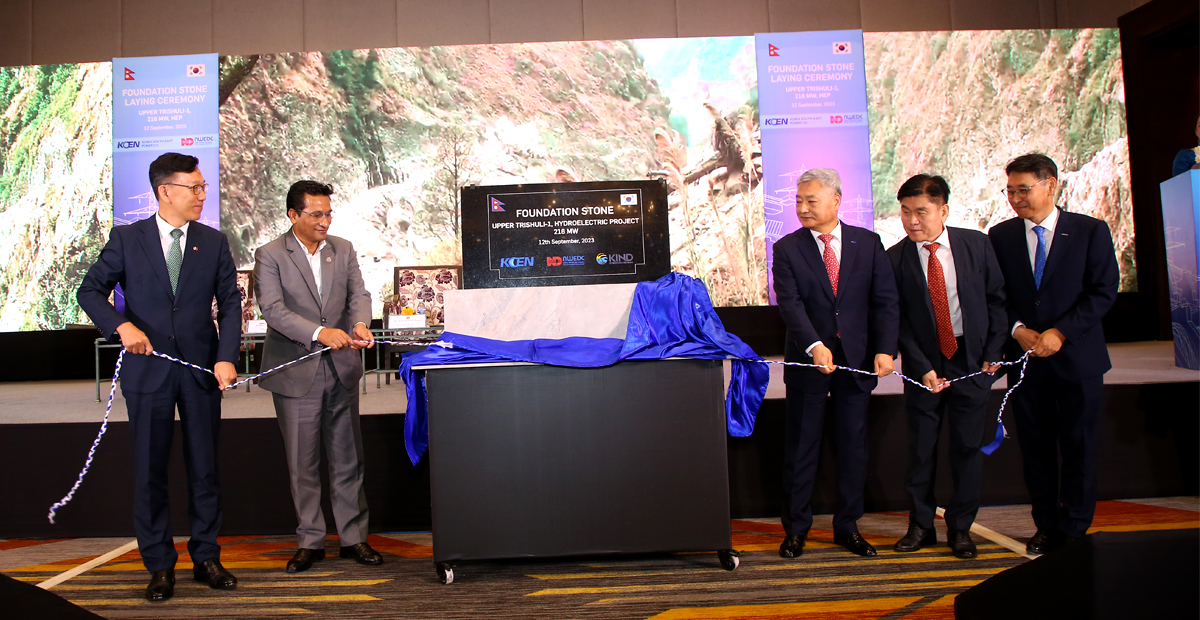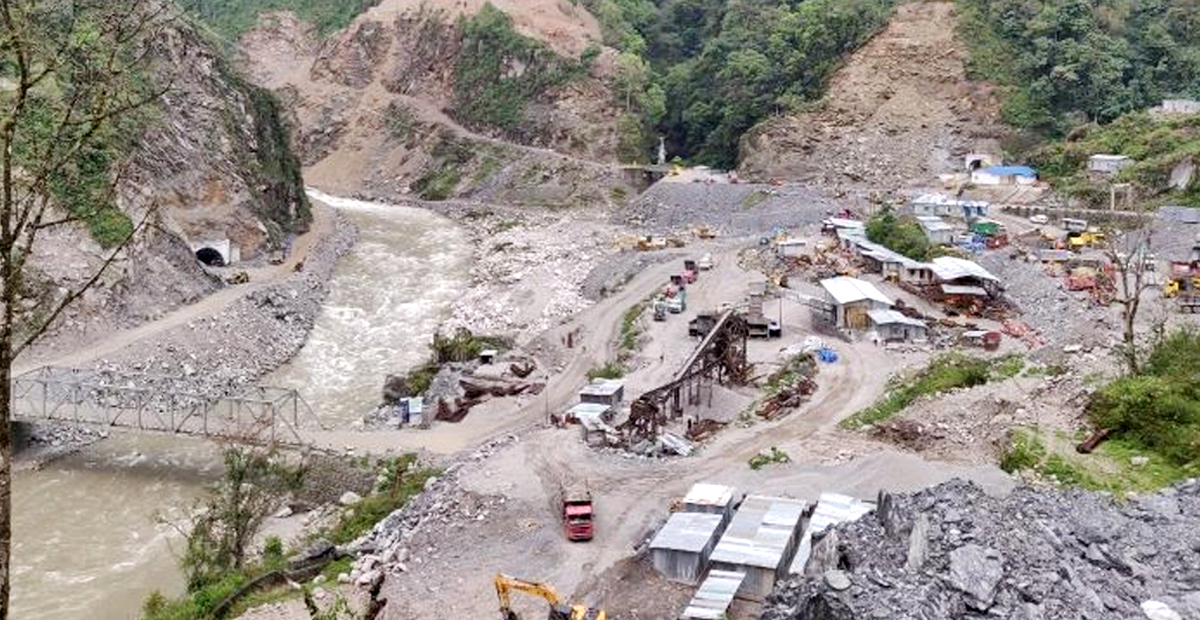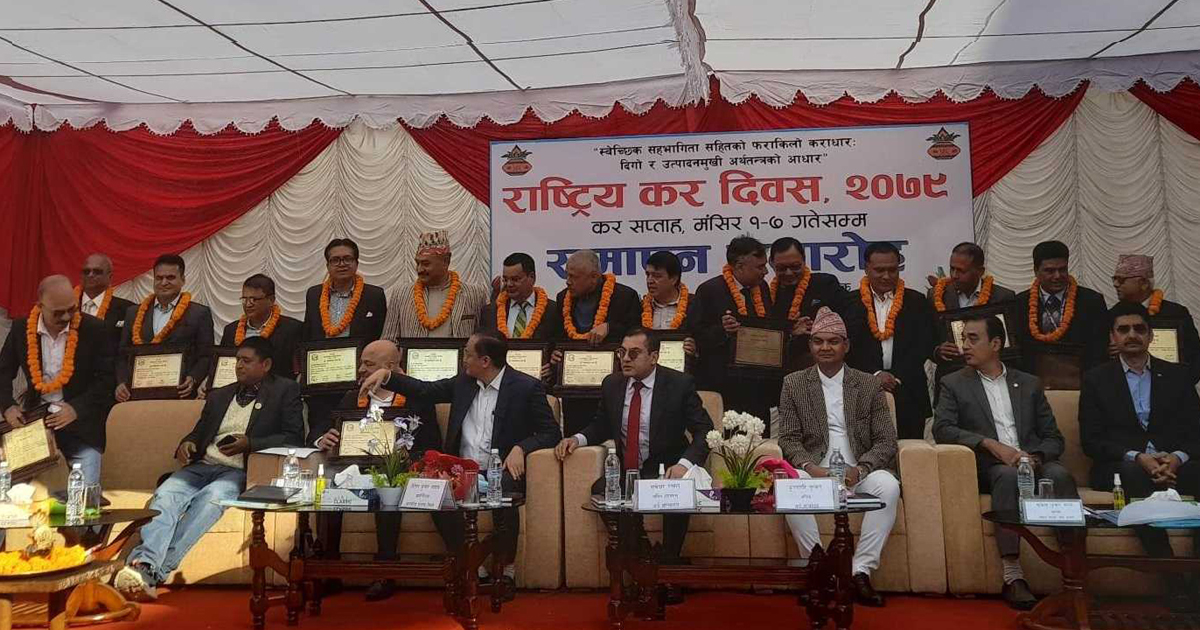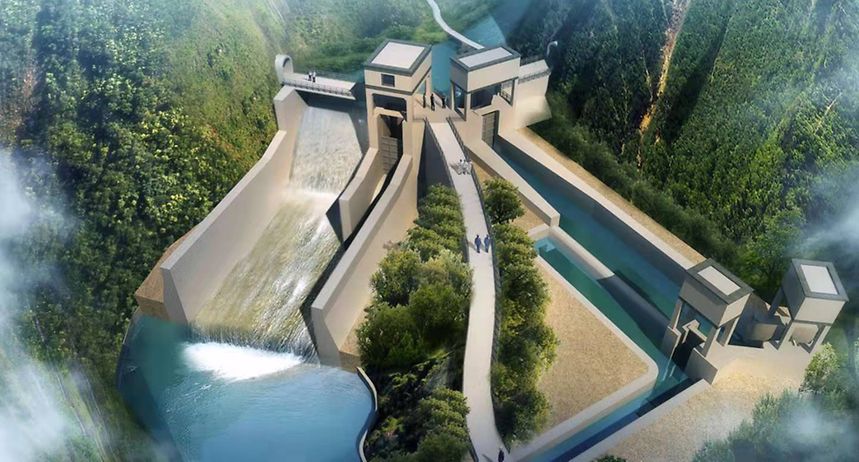Energy Update
Energy Minister lays foundation stone for UT-1 Project after 22 Percent Progress

Kathmandu; The Honorable Minister for Energy, Water Resources and Irrigation Shakti Bahadur Basnet has laid the foundation stone for Construction of the 216 MW Upper Trishuli-1 (UT-1) run-of-the-river hydropower project on Tuesday with special ceremony held in Kathmandu.
Nepal Water and Energy Development Company (NWEDC), a special purpose vehicle through which Korea South-East Power Co. (KOEN) along with Korea Overseas Infrastructure & Urban Development Corporation (KIND), International Finance Corporation (IFC) and domestic investor, is developing the project. The project is under construction under a project development agreement signed with the Government of Nepal in December 2016. UT-1 is the largest under construction with foreign direct investment for domestic consumption. The concession period for the project is 35 years, including five years of construction period.

Addressing the ceremony, minister Basnet said that Nepal has huge potential of hydropower and government is fully committed to make favorable environment for domestic and foreign investors to develop the hydropower projects and called upon the investor for bringing more and more investment in the sector. minister urged to complete the project in estimated time and assured the necessary co-ordination and facilitation.
Likewise, the President and Chief Executive Officer of KOEN Hoe-Chun Kim said the project is very important for fulfilling increasing internal power demand specially of the dry season of the Nepal and contributes to decrease the power import. The project's main construction started in January 2022 and is estimated to complete in December 2026.

According to the company the main construction works including the excavation of the underground powerhouse, headrace tunnel, head works are in full swing in all fronts and the overall progress rate of the project is 22 percent. Doosan Eneribility is the engineering, procurement, and construction (EPC) contractor for the Project. Approximately 1000 workers work at the construction site, including about 500 local residents from Project affected Rasuwa district. During the construction period (5 years) 700-1000 Nepalese employees will work for the project. And 70-80 Nepalese employees will work during the operation period (30 Years).
The 647.34 million USD (including Interest during Construction) project is financed through 70% debt and 30% equity. The project partners will provide an equity investment of 194.20 Million USD. In comparison, the debt of 453.12 million USD is being provided by a group of international lenders, including the International Finance Corporation (IFC), Asian Development Bank (ADB), Korean Exim Bank (K-EXIM), Korean Development Bank (KDB), Asian Infrastructure Investment Bank (AIIB), FMO (The Netherlands), the British International Investment (BII), Proparco (France), and the OPEC fund for International Development (OFID).
The shareholders of NWEDC include KOEN, Korea Overseas Infrastructure and Urban Development Corporation (KIND), IFC, and a local Nepalese partner. In the future, the Project affected communities will be made available a right to apply for 10% of shares of the Project.
UT-1 is expected to generate up to 1,533 GWh of electricity. Out of the total annual energy generated by the Project, 38.75 percent will be generated during the dry season, which is higher than most of the other run-of-the-river hydropower projects in Nepal, thus contributing vastly to managing the dry season electricity shortfall. The energy generated by UT-1 can reduce diesel import by more than 20 million USD per year. NEA will purchase the entire electricity output of Upper Trishuli-1, under a 30-year power purchase agreement (PPA) signed with NWEDC in January 2018.
The Project is very attractive for the country's power system as it is close to the Kathmandu Load Center and will get 104 MW of electricity even in the dry season with high electricity demand. The generated energy will flow to the national grid by connecting it to the Trishuli-3B hub substation constructing by the NEA.
Conversation
- Info. Dept. Reg. No. : 254/073/74
- Telephone : +977-1-5321303
- Email : [email protected]














